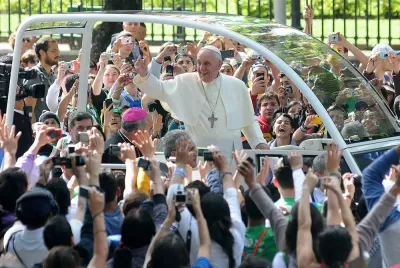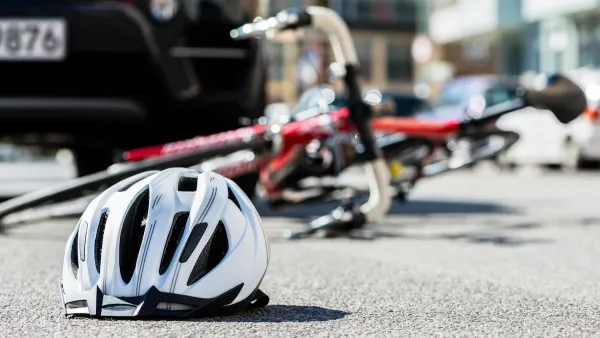Imagine all the people, driving safely and courteously.

Columnist David Brooks shares the details of the New Year's Eve homily delivered by Pope Francis, who spoke on the subject of "the artisans of the common good." That is, the normal folks, influencing society "through their normal, everyday gestures being kind in public places, attentive to the elderly."
According to Brooks, the homily "focused especially on driving, praising those people 'who move in traffic with good sense and prudence.'" Brooks goes on to list some of the moments that reveal the selfish and competitive among the drivers.
Driving is governed by law, but it’s also shaped by norms. If enough people adopt the same driving style, then that behavior hardens into a communal disposition. Once people understand what is normal around here, more people tend to drive that way, too, and you get this amplified, snowball effect. Kindness breeds kindness. Aggression breeds aggression.
Brooks goes on to survey the known instruments for measuring the driving culture of specific geographic areas, and delivers a final appeal to make better choices when behind the wheel.
FULL STORY: How Would Jesus Drive?

Planetizen Federal Action Tracker
A weekly monitor of how Trump’s orders and actions are impacting planners and planning in America.

Maui's Vacation Rental Debate Turns Ugly
Verbal attacks, misinformation campaigns and fistfights plague a high-stakes debate to convert thousands of vacation rentals into long-term housing.

San Francisco Suspends Traffic Calming Amidst Record Deaths
Citing “a challenging fiscal landscape,” the city will cease the program on the heels of 42 traffic deaths, including 24 pedestrians.

Defunct Pittsburgh Power Plant to Become Residential Tower
A decommissioned steam heat plant will be redeveloped into almost 100 affordable housing units.

Trump Prompts Restructuring of Transportation Research Board in “Unprecedented Overreach”
The TRB has eliminated more than half of its committees including those focused on climate, equity, and cities.

Amtrak Rolls Out New Orleans to Alabama “Mardi Gras” Train
The new service will operate morning and evening departures between Mobile and New Orleans.
Urban Design for Planners 1: Software Tools
This six-course series explores essential urban design concepts using open source software and equips planners with the tools they need to participate fully in the urban design process.
Planning for Universal Design
Learn the tools for implementing Universal Design in planning regulations.
Heyer Gruel & Associates PA
JM Goldson LLC
Custer County Colorado
City of Camden Redevelopment Agency
City of Astoria
Transportation Research & Education Center (TREC) at Portland State University
Jefferson Parish Government
Camden Redevelopment Agency
City of Claremont





























